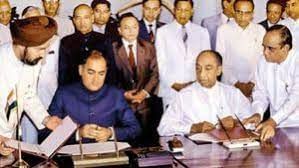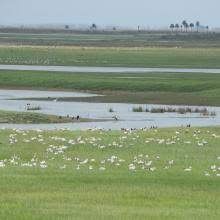UPSC Daily Current Affairs- 23rd January 2023 | Current Affairs & Hindu Analysis: Daily, Weekly & Monthly PDF Download
GS-II
Issues Faced by Females in Sports

Context
Recently, some sportspersons made allegations of sexual harassment against WFI (Wrestling Federation of India) president Brij Bhushan Sharan Singh.
- Sports Ministry demands explanation from WFI within 72 hours, if WFI fails to furnish the reply, the Ministry will proceed to initiate action against the Federation in terms of the provisions of the National Sports Development Code, 2011.
What is the Scenario of Such Allegations?
- According to RTI (Right to Information) Data, between 2010 to 2020, there were 45 complaints of sexual harassment to the SAI (Sports Authority of India), of which 29 were against coaches.
- In several of these reported cases, the accused were let off leniently, with punishments that consisted of transfers to a meager cut in pay or pension.
- Some of the cases have not seen the end of the tunnel with many dragging on for years, with no resolutions in sight.
- Abuse in sports was a poll issue in Germany in 2021. The Federal Parliament's Sports Committee hosted a public hearing on emotional, physical and sexualised violence in sports in May 2021.
- It is about time India discussed the issue and not wait for athletes to stage protests at Jantar Mantar to be heard.
- Living in the 21st century, where we have devised the technology to monitor robots to do our bidding, there’s still one aspect where we fall grossly short when it comes to progress — gender equality.
What are the Issues Faced by Sportswomen?
- Funding and Budget:
- Sportswomen face a lack of equal funding compared to men's athletics, making it difficult for them to compete and run consistent programs.
- Buoyant Sexism:
- Women are made to face the barrels of buoyant sexism on a daily basis, be it at work or even at home. They are monitored and judged by the way they dress, by the way they speak.
- Gender Disparity:
- Despite women's efforts to advocate for their social rights, they still do not receive the same level of respect or recognition on the professional front, particularly in the sports industry, as their male counterparts.
- Lack of Access and Costlier:
- Lack of physical education in schools and limited opportunities to play sports in both high school and college mean girls have to look elsewhere for sports –which may not exist or may cost more money.
- Often there is an additional lack of access to adequate playing facilities near their homes that makes it more difficult for girls to engage in sports.
- Safety and Transportation Issues:
- Sports require a place to participate – and for many girls, especially in dense urban environments, that means traveling to facilities through unsafe neighborhoods or lacking any means to get to a good facility miles away.
- And if there isn’t a safe option like carpooling with other families, the only option for a girl and her family may be to stay home.
- For example, Manipur is a sporting powerhouse, but 48% of female athletes travel over 10 km to reach the practice facility.
- Social Attitudes and Disfigurement:
- Despite recent progress, discrimination based on the real or perceived sexual orientation and gender identity of female athletes persists.
- Girls in sports may experience bullying, social isolation, negative performance evaluations, or the loss of their starting position.
- During socially fragile adolescence, the fear of being tagged “gay” is strong enough to push many girls out of the game.
- Decreased Quality Training:
- The facilities are not as good as the boys’ venues and the playing times may not be optimal.
- The availability of quality, trained coaches may be lacking in their community or these coaches may be more focused on the boys’ programs that have more money for training.
- Equipment, and even uniforms aren’t funded for many girls’ programs at the same levels as boys so their ability to grow and enjoy the sport is diminished. In short, sports just aren’t “fun” any more.
- Lack of Positive Role Models:
- Today’s girls are bombarded with images of external beauty, not those of confident, strong female athletic role models.
- Peer pressure can be hard for girls at any age; when that pressure isn’t offset with strong encouragement to participate in sports and healthy physical activity, the results may lead girls to drop out altogether.
- Limited Media Coverage:
- Women's sports are often underrepresented in the media, which can make it harder for female athletes to gain recognition and sponsorship opportunities.
- Pregnancy and Maternity:
- Female athletes often face challenges balancing motherhood and their sports careers.
- This can affect the training and competing opportunities for female athletes.
Why is it Important for More Women Participation in Sports?
- Physical and Mental Health:
- Sports can have a positive impact on physical and mental health for both men and women.
- Girls active in sports during adolescence and young adulthood are 20% less likely to get breast cancer later in life.
- Gender Parity:
- By providing equal opportunities and resources for women in sports, we can help to break down barriers and stereotypes that limit women's potential and participation in other areas of life.
- Sport in its most basic form encourages balanced participation and has the capacity to promote gender equality (SDG Goal 5: Achieve gender equality and empower all Achieve women and girls)
- Economic Empowerment:
- Women who participate in sports often have more opportunities for education and employment, which can lead to greater economic empowerment.
- Rectify Societal Connotations:
- Women's participation in sports can also help to change societal attitudes towards women and their capabilities.
- By seeing women excel in sports, it can inspire more women to pursue their own goals and aspirations, and challenge stereotypes about what women are capable of achieving.
- Representation:
- Women's participation in sports can help to provide better representation for women in leadership roles, including coaching and administration.
- It can also serve as an inspiration for young girls to pursue sports as a career.
- Community Building:
- Sports can bring people together and promote greater understanding and respect between different groups within society.
- By promoting greater participation in sports among women, we can help to build stronger and more inclusive communities.
Way Forward
- Women's participation in sports in India has been traditionally low due to cultural and societal attitudes. However, in recent years there have been efforts to promote and encourage women's participation in sports, such as the implementation of policies to increase funding and resources for female athletes, and the creation of programs to encourage girls to participate in sports from a young age.
- Despite these efforts, there is still a long way to go in terms of achieving gender parity in sports participation and representation in India.
- Sports in India is in the process of development. To accelerate this rate of development, a holistic approach should be adopted. Efforts are required in developing infrastructure, identifying sports talents, organising regular sports events, and generating awareness at the grass-root level.
Source: The Hindu
Chargesheet: Not a Public Document
Context
Recently, the Supreme Court (SC) ruled that chargesheets are not ‘public documents’ and enabling their free public access violates the provisions of the Criminal Code of Procedure (CrPC) as it compromises the rights of the accused, victim, and the investigation agencies.
What is a Chargesheet?
- About:
- A chargesheet, as defined under Section 173 CrPC, is the final report prepared by a police officer or investigative agency after completing their investigation of a case.
- In the K Veeraswami vs Union of India & Others (1991) case, the SC ruled that the chargesheet is a final report of the police officer under section 173(2) of the CrPC.
- A chargesheet must be filed against the accused within a prescribed period of 60-90 days, otherwise, the arrest is illegal, and the accused is entitled to bail.
- Chargesheet Should Contain:
- Details of names, the nature of the information, and offences. Whether the accused is under arrest, in custody, or has been released, whether any action was taken against him, these are all important questions answered in the chargesheet.
- Procedure after Filing the Chargesheet:
- After preparing the chargesheet, the officer-in-charge of the police station forwards it to a Magistrate, who is empowered to take notice of the offences mentioned in it so that the charges can be framed.
How is a Chargesheet Different from an FIR?
- Provision:
- The term, ‘chargesheet’ is defined under Section 173 of the CrPC but First Information Report (FIR), has not been defined in either the Indian Penal Code (IPC) or the CrPC. Instead, it finds a place under the police regulations/ rules under Section 154 of CrPC, which deals with ‘Information in Cognizable Cases’.
- Time of Filing:
- While the chargesheet is the final report filed towards the end of an investigation, an FIR is filed at the ‘first’ instance’ that the police are informed of a cognizable offense (offence for which one can be arrested without a warrant; such as rape, murder, kidnapping).
- Determination of Guilt:
- An FIR does not decide a person’s guilt but a chargesheet is complete with evidence and is often used during the trial to prove the offenses the accused is charged with.
- Terms & Conditions:
- After filing an FIR, the investigation takes place. Under Section 169 of the CrPC, the police can only forward the case to the Magistrate if they have sufficient evidence, otherwise, the accused is released from custody.
- According to Section 154 (3) of the CrPC, if any person is aggrieved by the refusal of authorities to file an FIR, they can send the complaint to the Superintendent of Police, who will either investigate himself or direct it to their subordinate.
- A chargesheet is filed by the police or law-enforcement/ investigative agency only after they have gathered sufficient evidence against the accused in respect of the offenses mentioned in the FIR, otherwise, a ‘cancellation report’ or ‘untraced report’ can be filed when due to lack of evidence.
Why is a Chargesheet not a Public Document?
- According to the Court, a chargesheet cannot be made publicly available as it’s not a ‘public document’ under Sections 74 and 76 of the Evidence Act, 1872.
- Section 74: It defines public documents as those which form the acts or records of sovereign authority, official bodies, tribunals, and of public offices either legislative, judicial or executive in any part of India, Commonwealth or a foreign country. It also includes public records “kept in any State of private documents”.
- Documents mentioned in this section are only public documents, and certified copies of them must be provided by the public authority having custody of them.
- Copy of chargesheets along with necessary public documents cannot be said to be public documents under this section.
- Section 76: Any public officer having custody of such documents must provide a copy upon demand and payment of a legal fee, along with a certificate of attestation that states the date, seal, name, and designation of the officer.
- As per Section 75 of the Evidence Act, all documents other than those listed under Section 74 are private documents.
- The Supreme Court in the Youth Bar Association of India vs Union of India case (2016) directed all police stations in the country to publish copies of FIRs online within 24 hours of registration, except in cases where offenses were of sensitive nature.
- Only FIRs were covered by this ruling, and chargesheets were not included.
Source: Indian Express
What is Machu Picchu?

Context
The iconic tourist site Machu Picchu in Peru was shut down recently, due to the ongoing anti-government protests that are spreading throughout the South American nation.
About Machu Picchu:
- It is a 15th-century Inca site.
- Location: Machu Picchu is located 50 miles (80 km) northwest of Cuzco, Peru, in the Cordillera de Vilcabamba of the Andes Mountains.
- Machu Picchu is believed to have been built by Pachacuti Inca Yupanqui, the ninth ruler of the Inca, in the mid-1400s.
- It is made up of temples, palaces, terraces, monuments, complexes and walls.
- The city is divided into a lower and upper part, separating the farming from residential areas, with a large square between the two.
- Machu Picchu was abandoned when the Inca Empire was conquered by the Spaniards in the sixteenth century.
- Machu Picchu was rediscovered in 1911 by the American explorer Hiram Bingham.
- It was designated a UNESCO World Heritage site in 1983.
What is the Inca Civilization?
- Inca Civilization flourished in ancient Peru between c. 1400 and 1533 CE.
- It is the largest empire ever seen in the Americas and the largest in the world at that time.
- Inca society was highly stratified.
- The emperor ruled with the aid of an aristocratic bureaucracy.
- Inca technology and architecture were highly developed.
- Their economy was based on agriculture.
- The Inca religion combined features of animism, fetishism, and the worship of nature gods.
- The Inca language Quechua is still spoken by around eight million people in the world.
- The descendants of the Inca are the present-day Quechua-speaking peasants of the Andes, who constitute around 45 percent of the population of Peru.
Source: The Hindu
What is the 13th Amendment to the Constitution of Sri Lanka?
Context
India’s External Affairs minister during a recent visit to Sri Lanka expressed India’s “considered view” with the Sri Lankan President that the full implementation of the 13th Amendment was “critical” for power devolution.
What is 13th Amendment to the Constitution of Sri Lanka:
- It is an outcome of the India-Sri Lanka Peace Accord of July 1987, signed by the then Prime Minister Rajiv Gandhi and President J.R. Jayawardene.
- It was an attempt to resolve Sri Lanka’s ethnic conflict that had aggravated into a full-fledged civil war, between the armed forces and the Liberation Tigers of Tamil Eelam.
- The 13th Amendment, led to the creation of Provincial Councils.
- It assured a power sharing arrangement to enable all nine provinces in the country, including Sinhala majority areas, to self-govern.
- Subjects such as education, health, agriculture, housing, land and police are devolved to the provincial administrations.
- It made Tamil one of Sri Lanka’s official languages and English, a link language.
- The amendment has never been fully implemented because of the overriding powers given to the President.
Source: The Hindu
GS-III
Concerns Over Aravali Safari Park

Context
Recently, some Environmental Activists have raised concerns over the 10,000-acre Aravali safari park Project proposed in Haryana.
What are the Key Points of Safari Park?
- This project will be the largest such project in the world. Currently the largest curated safari park outside Africa is in Sharjah, which opened in February 2022, with an area of about two thousand acres.
- It aims to boost tourism and employment opportunities for the local people.
What are the Concerns?
- The Aravalli safari project is being conceived and designed as a zoo safari and not a natural jungle safari to see native Aravalli wildlife in their natural habitat.
- Conservation of the Aravallis does not even get a mention in the aims of the project mentioned in the Proposition.
- Vehicular traffic and construction in the area, the proposed safari park will also disturb the aquifers under the Aravalli hills that are critical reserves for the water-starved districts.
- These aquifers are interconnected and any disturbance or alterations in the pattern can significantly alter the groundwater table.
- The group has especially objected to the ‘underwater zone’ envisioned in the park since the site is a “water-scarce region”.
- In Nuh district, the groundwater table is already below 1,000 feet at many places; the tube wells, borewells and ponds are running dry; Gurugram district has many areas in the ‘red zone’.
- The location falls under the category of ‘forest’, according to many orders by the Supreme Court and the National Green Tribunal, and is protected under the Forest Conservation Act 1972. As such, cutting of trees, clearing of land, construction and real estate development is prohibited on this land.
- The group also highlighted that the construction proposed by the Haryana tourism department in May 2022 would be illegal and further damage the already damaged Aravalli ecosystem.
How are Wildlife and Forests Protected in India?
- The Wild Life (Protection) Act, 1972:
- It provides for stringent punishment for violation of its provisions. The Act also provides for forfeiture of any equipment, vehicle or weapon that is used for committing wildlife offence(s).
- Protected Areas, viz National Parks, Sanctuaries, Conservation Reserves and Community Reserves have been created in the country covering important habitats to provide better protection to wildlife, including threatened species and their habitat.
- Wildlife Crime Control Bureau (WCCB):
- WCCB coordinates with State/UTs and other enforcement agencies to gather intelligence about poaching and unlawful trade in wild animals and animal articles.
- Alerts and advisories were issued by WCCB on poaching and illegal trade of wildlife to the concerned State and Central agencies for preventive action.
- National Green Tribunal:
- It is a specialized judicial body equipped with expertise solely for the purpose of adjudicating environmental cases in the country.
- The Indian Forest Act, 1927:
- It seeks to consolidate the law relating to forests, the transit of forest produces and the duty that can be levied on timber and other forest produce.
- The Wild Life (Protection) Amendment Act, 2006:
- The Act provides for creating the National Tiger Conservation Authority and the Tiger and Other Endangered Species Crime Control Bureau.
- The Forest (Conservation) Act, 1980:
- It provides a higher level of protection to the forests and to regulate diversion of forest lands for non-forestry purposes. FC Act, 1980 – Prior approval of the Central Government is essential for DE-reservation of forest lands and / or diversion of forest lands for non-forestry purposes.
- Scheduled Tribes and Other Traditional Forest Dwellers (Recognition of Forest Rights) Act, 2006:
- It has been enacted to recognize and vest the forest rights and occupation of forest land in forest-dwelling Scheduled Tribes and other traditional forest dwellers, who have been residing in such forests for generations.
Source: DownToEarth
Haiderpur Wetland
Context
The Union Environment Ministry has recently directed Uttar Pradesh to immediately stop the further draining of the Haiderpur wetland and ensure that dewatering the protected Ramsar site for farming needs takes place only when migratory birds are not nesting at the location.
About Haiderpur wetland:
- It is a human-made wetland that was formed in 1984 by the construction of the Madhya Ganga Barrage on a floodplain of the River Ganga.
- Location: Muzaffarnagar-Bijnor border in Uttar Pradesh.
- It is located within the boundaries of Hastinapur Wildlife Sanctuary.
- This provides habitat for various animal and plant species, including around 30 species of plants, 300 species of birds (102 waterbirds), 40 fish and more than ten mammal species.
- It supports more than 15 globally threatened species, such as the critically endangered gharial and the endangered hog deer, black-bellied tern, steppe eagle, Indian skimmer and gold mahseer.
- It has been recognised as the 47th Ramsar site of India in 2021.
About Ramsar Convention (Convention on Wetlands of International Importance):
- It is an intergovernmental treaty that provides the framework for the conservation and wise use of wetlands and their resources.
- The Convention was adopted in the Iranian city of Ramsar in 1971 and came into force in 1975.
- It is the only global treaty that focuses specifically on wetlands.
- One key instrument of the Convention is its List of Wetlands of International Importance (the “Ramsar List”).
Source: Indian Express
What is Groningen Gas Field?
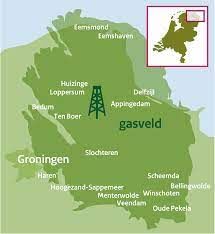
Context
Recently, the Netherlands seeks to shut down Europe's biggest gas field this year because of safety concerns.
About Groningen Gas Field:
- The Groningen gas field is natural in Groningen province in the northeastern part of the Netherlands.
- It is the largest natural gas field in Europe.
- This region of Groningen in the Netherlands has a gas field that began operations in 1963.
- During the 1980s, the area saw numerous earthquakes - minor enough to avoid large damage but big enough for local buildings to develop cracks.
- Following these quakes, the Dutch government had earlier said that it would shutter the field in response to local protests.
- In Groningen, the ground subsiding has been caused by extraction alone over several years.
- Such extraction causes rocks to contract - as the pores get to hold fewer and fewer hydrocarbons over time.
Source: Indian Express
What is Yellow Band Disease?
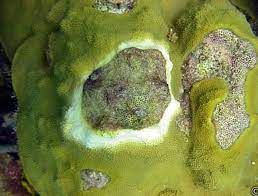
Context
Recently, scientists found that corals of eastern Thailand are getting affected by Yellow band Disease which is killing corals over vast stretches of the sea floor.
About Yellow band Disease:
- Yellow-band disease—named for the colour it turns corals before destroying them—was first spotted decades ago and has caused widespread damage to reefs in the
- There is no known cure for this disease and unlike coral, bleaching corals will not be restored once they get infected by this disease.
- Scientists believe overfishing, pollution and rising water temperatures because of climate change may be making the reefs more vulnerable to yellow-band disease.
Source: PIB
What is Planet Parade?
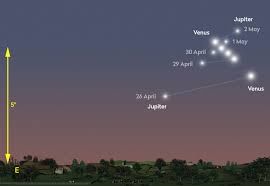
Context
Recently, over the past few nights, Venus and Saturn have been gradually coming together in the sky which was visible through the naked eye.
About Planet Parade:
- This is the phenomenon wherein the planets Mercury, Venus, Mars, Jupiter, and Saturn were visible to the naked eye from Earth.
- This planetary meet-up, also known as a conjunction, makes the two planets appear close together or even touch in the Earth's night sky.
- Despite being millions of kilometres apart, the planets seem to occupy the same space in the night sky because of their alignment.
- Just after sunset in the west, a conjunction of Venus and Saturn were 0.4 degrees apart as seen from earth.
Source: Indian Express
|
38 videos|5288 docs|1117 tests
|
FAQs on UPSC Daily Current Affairs- 23rd January 2023 - Current Affairs & Hindu Analysis: Daily, Weekly & Monthly
| 1. What is the significance of GS-II and GS-III in the UPSC exam? |  |
| 2. What are the key areas covered in GS-II and GS-III? |  |
| 3. How should I prepare for GS-II and GS-III in the UPSC exam? |  |
| 4. Are there any specific resources or books recommended for GS-II and GS-III preparation? |  |
| 5. How much weightage do GS-II and GS-III carry in the UPSC exam? |  |


